sample.pdf
sterling.com
Welcome to Sterling Software
Efficient C++ Performance Programming Techniques.pdf
Table of Content
Copyright
Dedication
Preface
Introduction
Roots of Software Inefficiency
Figure 1. High-level classification of software performance.
Figure 2. Refinement of the design performance view.
Figure 3. Refinement of the coding performance view.
Our Goal
Software Efficiency: Does It Matter?
Terminology
Organization of This Book
Chapter 1. The Tracing War Story
Our Initial Trace Implementation
What Went Wrong
Figure 1.1. The performance cost of the Trace object.
The Recovery Plan
Figure 1.2. Impact of eliminating one string object.
Figure 1.3. Impact of conditional creation of the string member.
Key Points
Chapter 2. Constructors and Destructors
Inheritance
Figure 2.1. The cost of inheritance in this example.
Composition
Lazy Construction
Redundant Construction
Figure 2.2. Overhead of a silent initialization is negligible in this particular scenario.
Figure 2.3. More significant impact of silent initialization.
Key Points
Chapter 3. Virtual Functions
Virtual Function Mechanics
Templates and Inheritance
Hard Coding
Inheritance
Templates
Key Points
Chapter 4. The Return Value Optimization
The Mechanics of Return-by-Value
The Return Value Optimization
Figure 4.1. The speed-up of RVO.
Computational Constructors
Key Points
Chapter 5. Temporaries
Object Definition
Type Mismatch
Pass by Value
Return by Value
Eliminate Temporaries with op=()
Key Points
Chapter 6. Single-Threaded Memory Pooling
Version 0: The Global new() and delete()
Version 1: Specialized Rational Memory Manager
Figure 6.1. A free list of Rational objects.
Figure 6.2. Global new() and delete() compared to a Rational memory pool.
Version 2: Fixed-Size Object Memory Pool
Figure 6.3. Adding a template memory pool for generic objects.
Version 3: Single-Threaded Variable-Size Memory Manager
Figure 6.4. Variable-size memory free list.
Figure 6.5. A variable-size memory pool is naturally slower than fixed-size.
Key Points
Chapter 7. Multithreaded Memory Pooling
Version 4: Implementation
Figure 7.1. Comparing multithreaded to single-threaded memory pooling.
Version 5: Faster Locking
Figure 7.2. Multithreaded memory pool using faster locks.
Figure 7.3. Comparing the various flavors of memory pooling.
Key Points
Chapter 8. Inlining Basics
What Is Inlining?
Method Invocation Costs
Figure 8.1. Call frame register mapping.
Why Inline?
Inlining Details
Inlining Virtual Methods
Performance Gains from Inlining
Key Points
Chapter 9. Inlining—Performance Considerations
Cross-Call Optimization
Why Not Inline?
Development and Compile-Time Inlining Considerations
Profile-Based Inlining
Table 9.1. The Inlining Decision Matrix
Inlining Rules
Singletons
Trivials
Key Points
Chapter 10. Inlining Tricks
Conditional Inlining
Selective Inlining
Recursive Inlining
Inlining with Static Local Variables
Architectural Caveat: Multiple Register Sets
Key Points
Chapter 11. Standard Template Library
Asymptotic Complexity
Insertion
Figure 11.1. Speed of insertion.
Figure 11.2. Object insertion speed.
Figure 11.3. Comparing object to pointer insertion.
Figure 11.4. Comparing list to vector insertion.
Figure 11.5. Vector insertion with and without capacity reservation.
Figure 11.6. Inserting at the front.
Deletion
Figure 11.7. Comparing list to vector deletion.
Figure 11.8. Deleting elements at the front.
Traversal
Figure 11.9. Container traversal speed.
Find
Figure 11.10. Container search speed.
Figure 11.11. Comparing generic find() to member find().
Function Objects
Figure 11.12. Comparing function objects to function pointers.
Better than STL?
Figure 11.13. Comparing STL speed to home-grown code.
Key Points
Chapter 12. Reference Counting
Figure 12.1. Duplicating resources.
Implementation Details
Figure 12.2. A simple design for a reference-counted Widget class.
Figure 12.3. Adding inheritance and smart pointer to the reference-counting design.
Figure 12.4. BigInt assignment speed.
Figure 12.5. BigInt creation speed.
Preexisting Classes
Figure 12.6. Reference-counting a pre-existing BigInt.
Figure 12.7. BigInt creation speed.
Concurrent Reference Counting
Figure 12.8. Multithreaded BigInt assignment speed.
Figure 12.9. Multithreaded BigInt creation speed.
Key Points
Chapter 13. Coding Optimizations
Caching
Precompute
Reduce Flexibility
80-20 Rule: Speed Up the Common Path
Lazy Evaluation
Useless Computations
System Architecture
Memory Management
Library and System Calls
Compiler Optimization
Key Points
Chapter 14. Design Optimizations
Design Flexibility
Caching
Web Server Timestamps
Data Expansion
The Common Code Trap
Efficient Data Structures
Lazy Evaluation
getpeername()
Useless Computations
Obsolete Code
Key Points
Chapter 15. Scalability
Figure 15.1. Single processor architecture.
Figure 15.2. Threads are the scheduling entities.
The SMP Architecture
Figure 15.3. The SMP Architecture.
Amdahl's Law
Figure 15.4. Potential speedup is limited.
Figure 15.5. A specific design of one Web server.
Multithreaded and Synchronization Terminology
Break Up a Task into Multiple Subtasks
Cache Shared Data
Share Nothing
Partial Sharing
Figure 15.6. A single shared resource.
Figure 15.7. Breaking up a single shared resource.
Lock Granularity
False Sharing
Thundering Herd
Reader/Writer Locks
Key Points
Chapter 16. System Architecture Dependencies
Memory Hierarchies
Table 16.1. Memory Access Speed
Registers: Kings of Memory
Disk and Memory Structures
Cache Effects
Cache Thrash
Avoid Branching
Prefer Simple Calculations to Small Branches
Threading Effects
Context Switching
Kernel Crossing
Threading Choices
Key Points
Bibliography
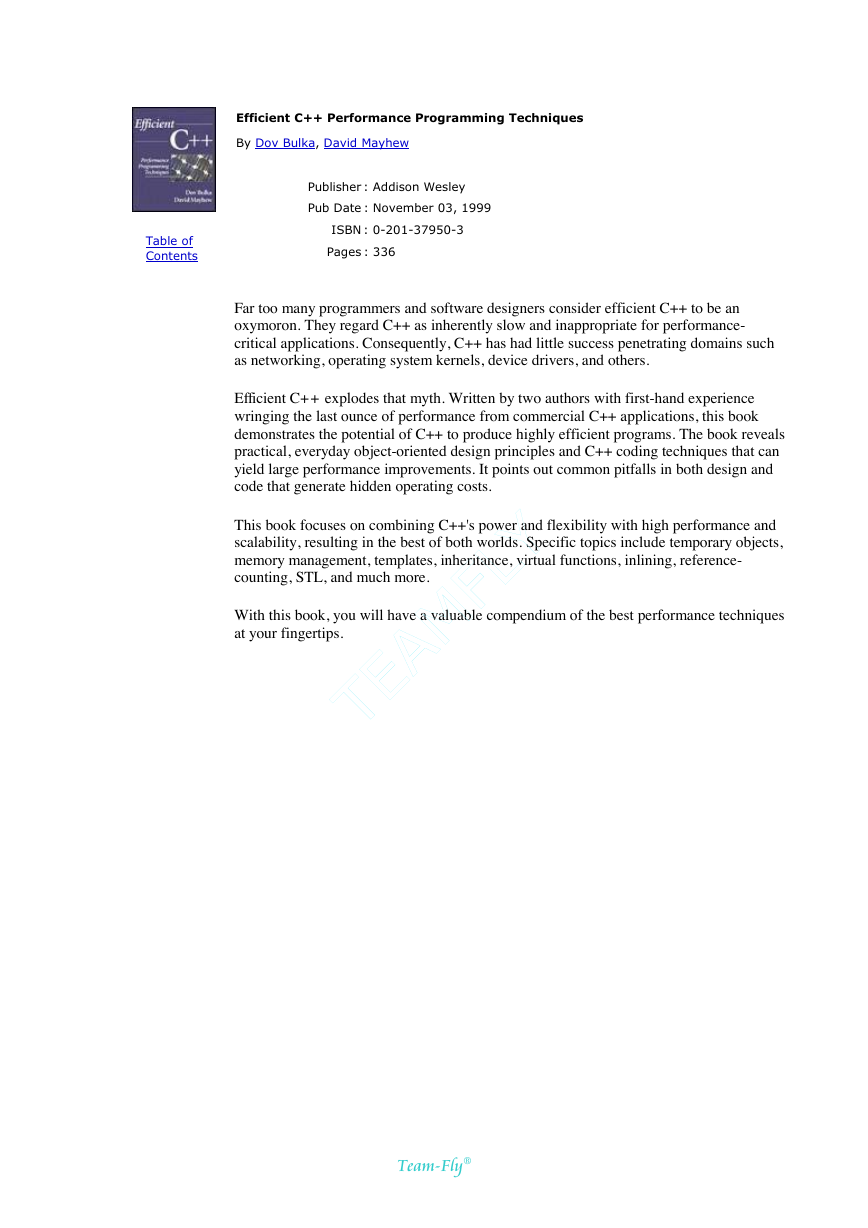
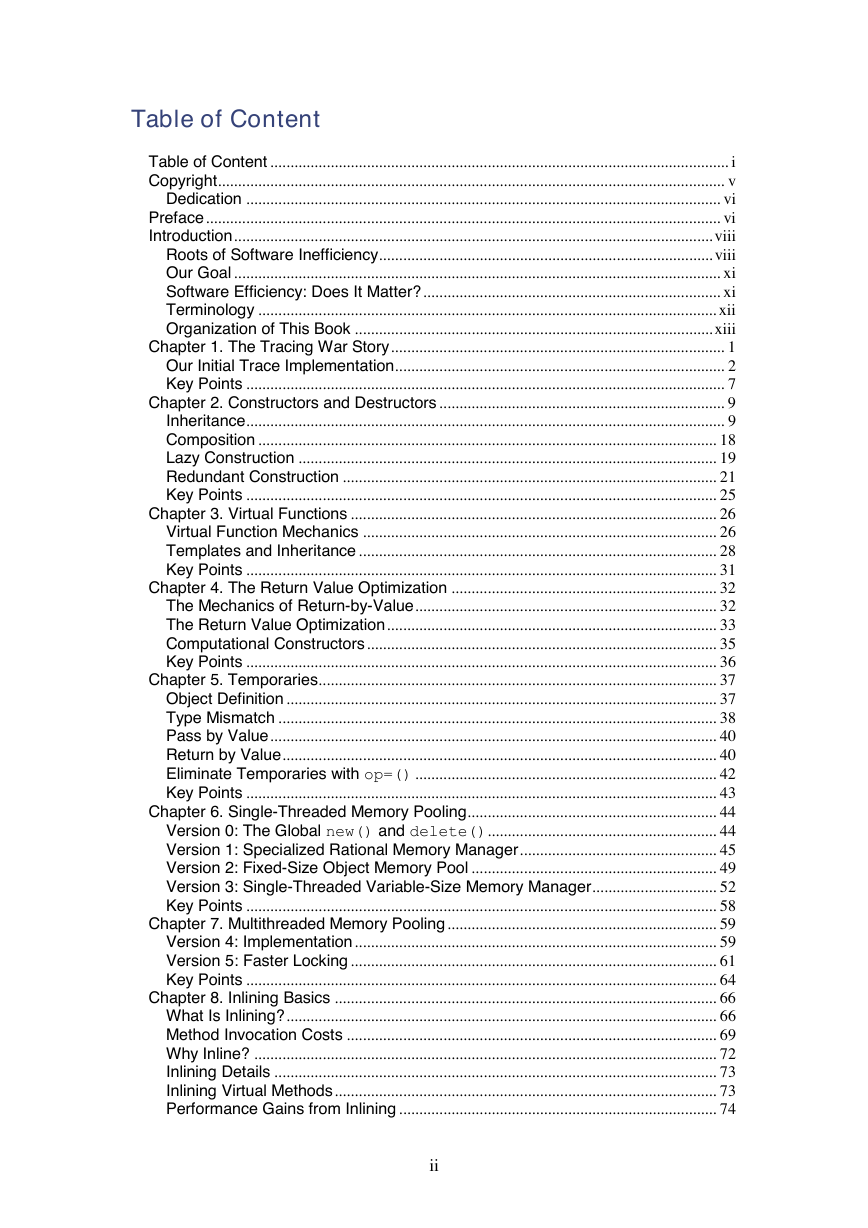

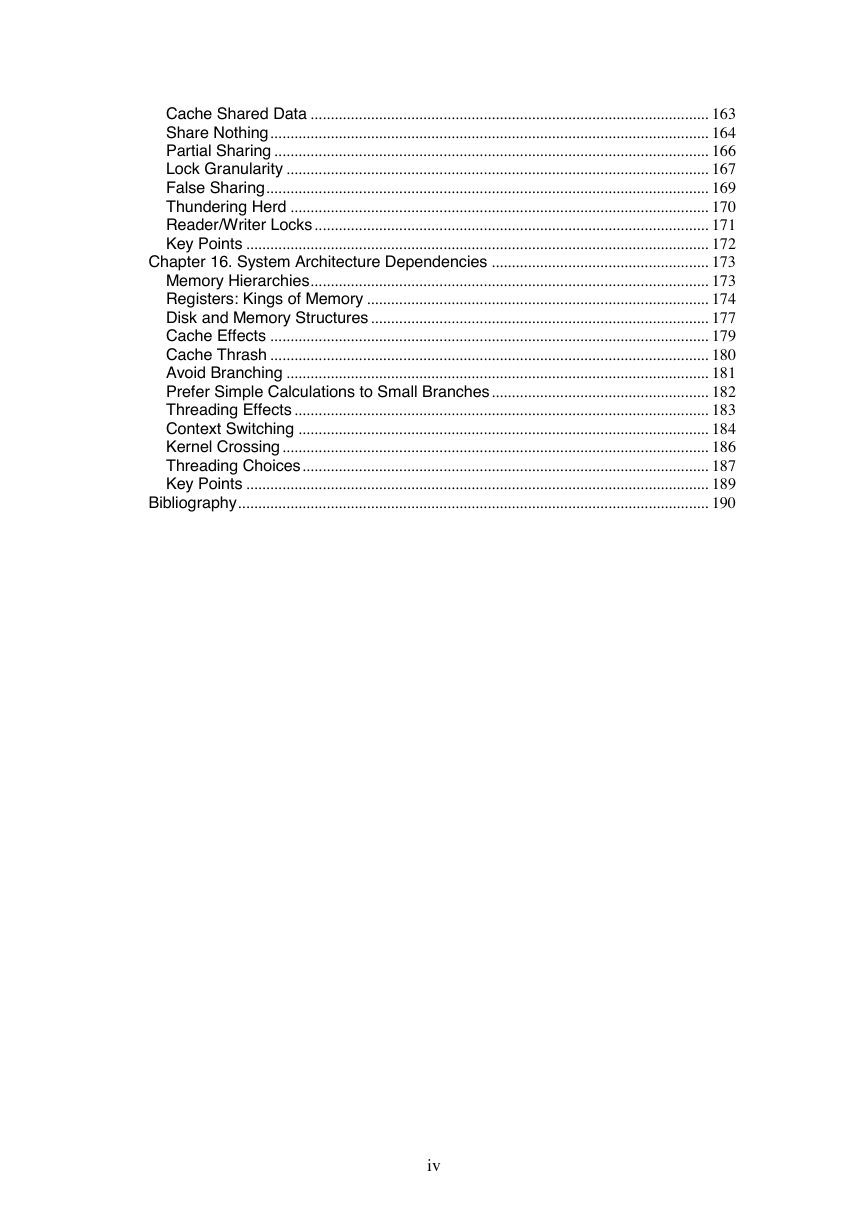
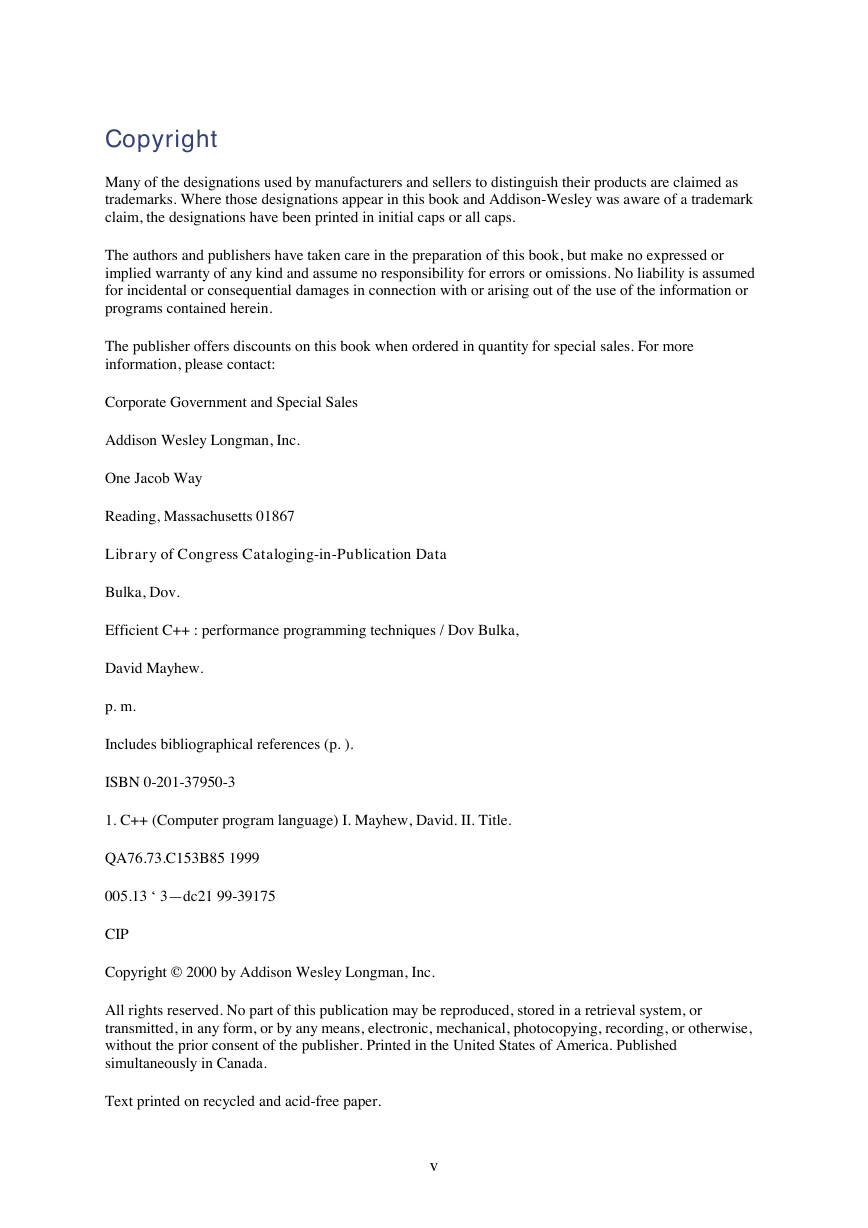
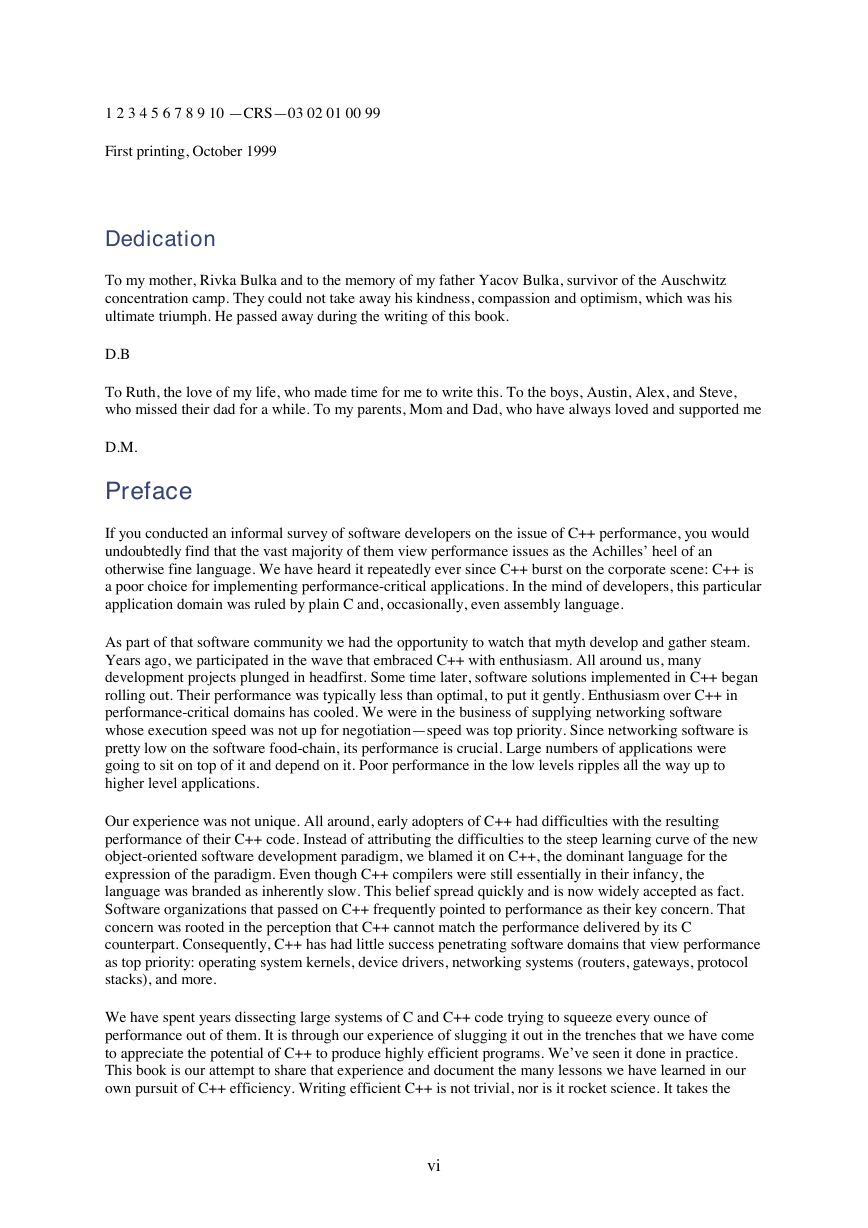
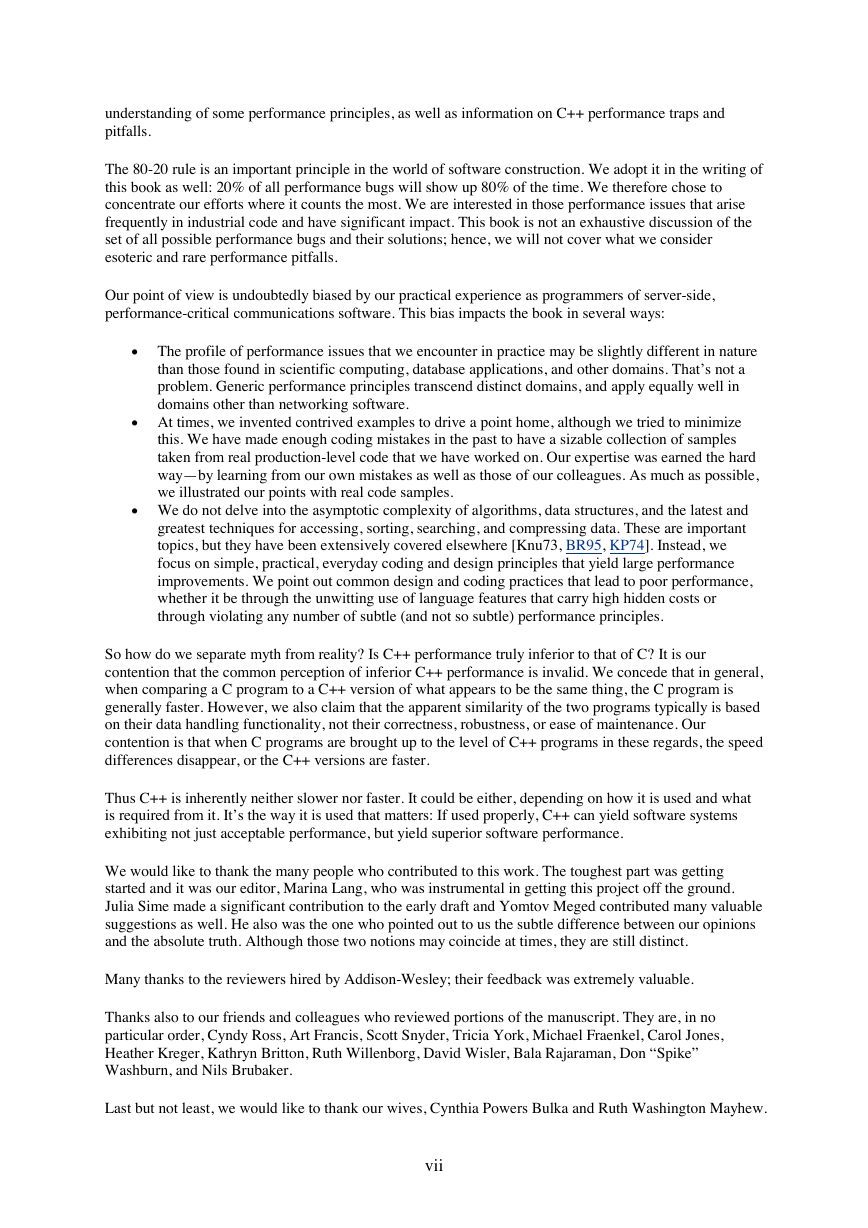









 2023年江西萍乡中考道德与法治真题及答案.doc
2023年江西萍乡中考道德与法治真题及答案.doc 2012年重庆南川中考生物真题及答案.doc
2012年重庆南川中考生物真题及答案.doc 2013年江西师范大学地理学综合及文艺理论基础考研真题.doc
2013年江西师范大学地理学综合及文艺理论基础考研真题.doc 2020年四川甘孜小升初语文真题及答案I卷.doc
2020年四川甘孜小升初语文真题及答案I卷.doc 2020年注册岩土工程师专业基础考试真题及答案.doc
2020年注册岩土工程师专业基础考试真题及答案.doc 2023-2024学年福建省厦门市九年级上学期数学月考试题及答案.doc
2023-2024学年福建省厦门市九年级上学期数学月考试题及答案.doc 2021-2022学年辽宁省沈阳市大东区九年级上学期语文期末试题及答案.doc
2021-2022学年辽宁省沈阳市大东区九年级上学期语文期末试题及答案.doc 2022-2023学年北京东城区初三第一学期物理期末试卷及答案.doc
2022-2023学年北京东城区初三第一学期物理期末试卷及答案.doc 2018上半年江西教师资格初中地理学科知识与教学能力真题及答案.doc
2018上半年江西教师资格初中地理学科知识与教学能力真题及答案.doc 2012年河北国家公务员申论考试真题及答案-省级.doc
2012年河北国家公务员申论考试真题及答案-省级.doc 2020-2021学年江苏省扬州市江都区邵樊片九年级上学期数学第一次质量检测试题及答案.doc
2020-2021学年江苏省扬州市江都区邵樊片九年级上学期数学第一次质量检测试题及答案.doc 2022下半年黑龙江教师资格证中学综合素质真题及答案.doc
2022下半年黑龙江教师资格证中学综合素质真题及答案.doc